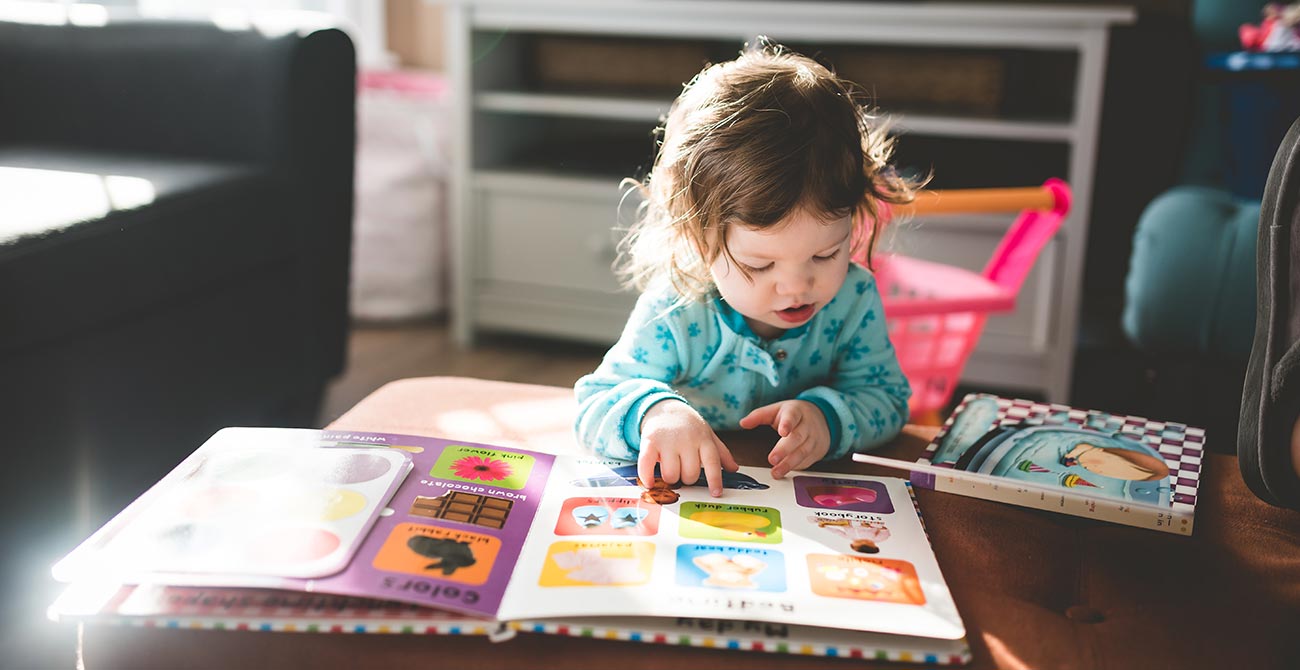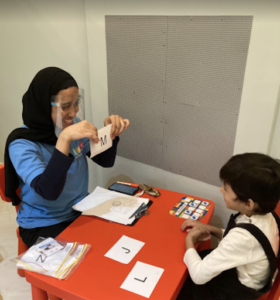
الفرق بين الكلام واللغة
بقلم منى تدايون- MA, ABA, MBA, ICBA, BCBA
أبريل 2022
بصفتنا أخصائيي نطق ولغة، لا ينتهي عملنا بانتهاء جلسة علاج النطق. في الواقع، من أهم جوانب مهنتنا تدريب الآباء ومقدمي الرعاية على التقنيات التي يمكنهم استخدامها في المنزل لممارسة تطوير الكلام واللغة مع أطفالهم.
للبدء، من المهم الإشارة إلى الفرق بين الكلام واللغة. يعتقد الكثير من الناس أن الكلام واللغة يعنيان الشيء نفسه، ولكنهما ليسا كذلك. عندما نشير إلى أهداف الكلام عندما نشير إلى أهداف الكلام في برنامج الطفل، فإننا نأخذ في الاعتبار مدى وضوح الطفل، ومدى سهولة فهمه. عندما نتحدث عن اللغة وما هي الكلمات التي يستخدمها الطفل، من المهم أن نرى كيف يجمع الطفل هذه الكلمات في جمل. أيضًا، انتبه جيدًا لكيفية استخدام الكلمات في مجموعات مختلفة للتفاعل اجتماعيًا. عندما نحلل الكلام، نلاحظ تنفس الطفل، وإذا كانت هناك قوة صوتية كافية لإنتاج التواصل، فهل يوجد مصدر مناسب لتدفق الهواء؟ كيف يتدفق الهواء من الفم أو الأنف، وكيف يهتز داخل تجاويف الفم والأنف، وكيف يبدو، وهل هو واضح، وكيف تهتز الأحبال الصوتية، وهل هناك بحة في الصوت؟ وأخيرًا، ننظر إلى النطق، وكيف يتجمع لإنتاج الكلام.
من ناحية أخرى، غالبًا ما تكون اللغة غير منطوقة، مثل لغة الإشارة. من المهم هنا الانتباه إلى مفردات الطفل، هل يمتلك الكلمات التي يحتاجها للتواصل؟ ليس بالضرورة أن تكون منطوقة. في اللغة، يتم التركيز بشكل أكبر على القواعد النحوية والنحوية. من المهم تقييم احتياجات طفلك لوضع برنامج فردي لمساعدته على النمو والتطور في المجالات التي يحتاج إليها.
يخبرنا بعض الآباء أن أطفالهم يفهمون ما يقولونه لهم، لكنهم لا يعرفون كيف يردون عليه. إحدى الطرق للمساعدة في تطوير مهارات طفلك اللغوية والمساعدة في تسهيل بيئة غنية باللغة، هي استخدام الخيارات اللفظية والبصرية كوسيلة لدعم الفهم. يجب استخدام هذه الاستراتيجية عندما يقترب منك طفلك برغبة أو حاجة. ربما يكون جائعًا أو يرغب في اللعب معك، فهذه خطوة أولى جيدة أظهرها للتعبير عن نيته. عندما يبادر، من المهم أن ترى ما يلفت انتباهه، وما إذا كان ينظر إلى شيء محدد، أو يحاول الوصول إلى شيء ما. اتبع خطواته، لذلك إذا كان يحاول الوصول إلى لعبة، فيمكننا أن نمثل له اللغة، وهذا يعني تقديم مثال لطفلك على شيء يجب أن يقوله في تلك اللحظة. يمكننا إخراج لعبتين وسؤال الطفل، أي لعبة تفضل، هذه أم تلك؟ هذا يمنح طفلك فرصة للتعبير عن اللعبة التي يريدها والتعبير عن تفضيله.
عندما نُبقي نماذجنا اللغوية بسيطةً لمتعلمي اللغة في مراحلهم الأولى، فإننا نزيد من احتمالية فهمهم وتطورهم اللغوي. على سبيل المثال، إذا أمسك طفلك بصندوق ألعاب، وسألناه: "هل تريد اللعب ببعض الألعاب؟" أو "هيا بنا نلعب بسياراتنا"، فقد نُفوّت عليه فرصةً مهمةً للتعبير عن هذه اللغة بنفسه. إذا كنت قلقًا بشأن مهارات طفلك اللغوية الكلامية، تواصل معنا على الرقم 39006065 واتخذ الخطوة الأولى لمساعدة طفلك على التواصل بثقة. 


